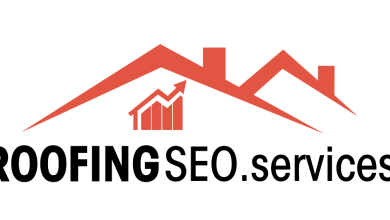
For startups, a website is more than just a digital storefront. It’s also the first point of contact with your potential customers, investors, or partners. So that makes it a crucial tool for shaping your brand’s identity and driving growth. A well-crafted website not only showcases what your business offers but also establishes credibility and trust from the get-go. Moreover, it can set your startup apart from the competition and lay the foundation for long-term success.
If you’re looking for tips on how to make a website that’s powerful and effective for your startup, you’ve come to the right place. This blog highlights aspects that every startup should consider including in their website.
We’ve got a lot to discuss, so let’s start right away.

Key Website Elements That Drive Better Results
Startups have a genuine passion for success. To ensure your website takes off in the right direction, here is a list of things to channel your efforts into.
1. Embrace a Minimalistic Design Approach
In web design, less is more. A minimalistic approach focuses on simplicity, making it easier for users to navigate and absorb important information. By eliminating unnecessary clutter, you allow your website’s core message to shine through, creating a seamless and engaging experience for visitors.
However, minimalism enhances user experience and improves website performance. Since there are fewer design elements, your website loads faster, guiding users quickly through the site without delays or distractions. For those in the real estate business, considering website design for estate agents can help create a professional and efficient online presence.
A sleek, modern design makes your startup look more credible and professional. So, don’t use too much content or visuals, as this can easily overwhelm a visitor. Instead, make your product or service the focal point of your website.
2. Focus on High-Quality Visual Design
First impressions are everything nowadays. Before a person even uses your website, they will judge your startup based on its looks. That means your website should visually communicate your brand’s values and mission while being aesthetically pleasing.
A simple design with high-quality images, graphics, and videos can grab visitors’ attention. Additionally, incorporating the right visual elements, such as color patterns and fonts that reflect your brand’s identity, can help create a consistent, cohesive look.
3. Prioritize User Experience
Good user experience (UX) ensures your website is easy to navigate and users can find information. One important aspect to focus on is an intuitive layout. This enables users to explore your offerings without getting confused or overwhelmed. A clearly visible navigation bar can help visitors find the pages they need quickly.
4. Optimize for Mobile Devices
According to research, 92.3% of internet users use their mobile phones to access the internet. So they’re probably a major portion of your website traffic, too. If your website isn’t optimized for mobile devices, you risk losing a good chunk of your customers. Developing a website with responsive design allows it to adapt to any screen size, whether it’s being used on a smartphone, tablet, or desktop.
Mobile optimization does more than keep your users happy. It also plays a crucial role in your website’s SEO (search engine optimization). Google prioritizes mobile-friendly websites in search rankings, so failing to optimize could result in lower rankings.
5. Use Clear, Compelling CTAs
One of the reasons you developed a website is to grow your bottom line. Therefore, it’s crucial to ensure visitors who arrive at your site take action, whether signing up for a newsletter, downloading an eBook, or purchasing a product.
The way to do that is to incorporate clear, compelling CTAs strategically throughout your site, such as at the end of blog posts, on landing pages, in product descriptions, etc. Furthermore, use action-oriented, specific words in your CTAs to convince mere visitors to click on the button.
6. Improve Loading Speed
People today are very impatient. They won’t wait more than a few seconds for a page to load before bouncing. And the same applies to your website. Users expect it to load quickly. Otherwise, frustrated users will leave, negatively affecting their perception of your startup. And they’re probably going to your competitor, which hurts your bottom line.
So, how can you speed things up? Optimizing images, minimizing HTTP requests, and leveraging browser caching are easy ways to improve loading times. Testing your website’s performance with tools like Google PageSpeed Insights can help ensure it runs efficiently.
7. Implement SEO Best Practices
As a newbie in the commercial landscape, your startup needs all the help it can get so more and more people are aware of its existence. SEO is a powerful tool that helps drive organic traffic to a website. By optimizing your website’s content for search engines, you increase the probability of appearing in relevant search results, eventually driving more potential customers to your business.
But SEO requires a combination of strategies, such as including relevant keywords in your content, creating high-quality blog posts, building backlinks from reputable sites, optimizing meta tags, and ensuring your website’s technical structure is search-engine friendly. With the right SEO techniques, you can boost domain authority and SERP rankings.
8. Enhance Website Security
Security is paramount, especially if your startup website collects sensitive customer information like credit card numbers or email addresses. Failing to secure your website can cause data breaches, severely damaging your startup’s reputation.
Start by ensuring your website has an SSL certificate, which encrypts the connection between the user’s browser and your site. This not only protects your customers’ data but also boosts your SEO, as search engines favor secure websites. Additionally, implement regular security updates, use strong passwords, and back up your website to prevent data loss.
9. Track and Analyze Performance
It’s important to track your website’s performance to understand what’s working and what isn’t. Using tools like Google Analytics can provide insights into visitor behavior, for example, which pages are most popular, how long visitors stay on your website, and what actions they take.
This data can help refine your strategy, improve user experience, and optimize content. Consistently tracking the performance empowers you to make data-driven decisions that can improve how your startup operates.
10. Incorporate a Blog
Blogs are an effective way to engage your audience, build trust, and improve your SEO. By sharing valuable insights, tips, and news related to your industry, you can position yourself as a thought leader.
High-quality, informative content that addresses your audience’s pain points and needs establishes you as an expert in your field. It also enhances SEO efforts, allowing your startup to get the attention it deserves. Update your blogs regularly to ensure the content remains relevant to your target audience.
Final Words of Advice
Your work doesn’t stop even after your website is live. You need to keep checking that there are no issues with functionality, user experience, or design.
Developing and maintaining a top-notch website is a full-time job. Consulting a website development company can free up time for other responsibilities. The good news is that you can easily find a website development company in Florida or your state that can help evolve your website, enabling it to adapt to changes in user behavior, industry trends, and business goals.
Over to You
Using the essential tips mentioned above, you can build a well-designed website for your startup. But don’t limit yourself to only these tips. There are dozens of effective ways to enhance your website.
It’s time to create a powerful online presence that attracts more customers and grows your business.



